Contact Sheet:
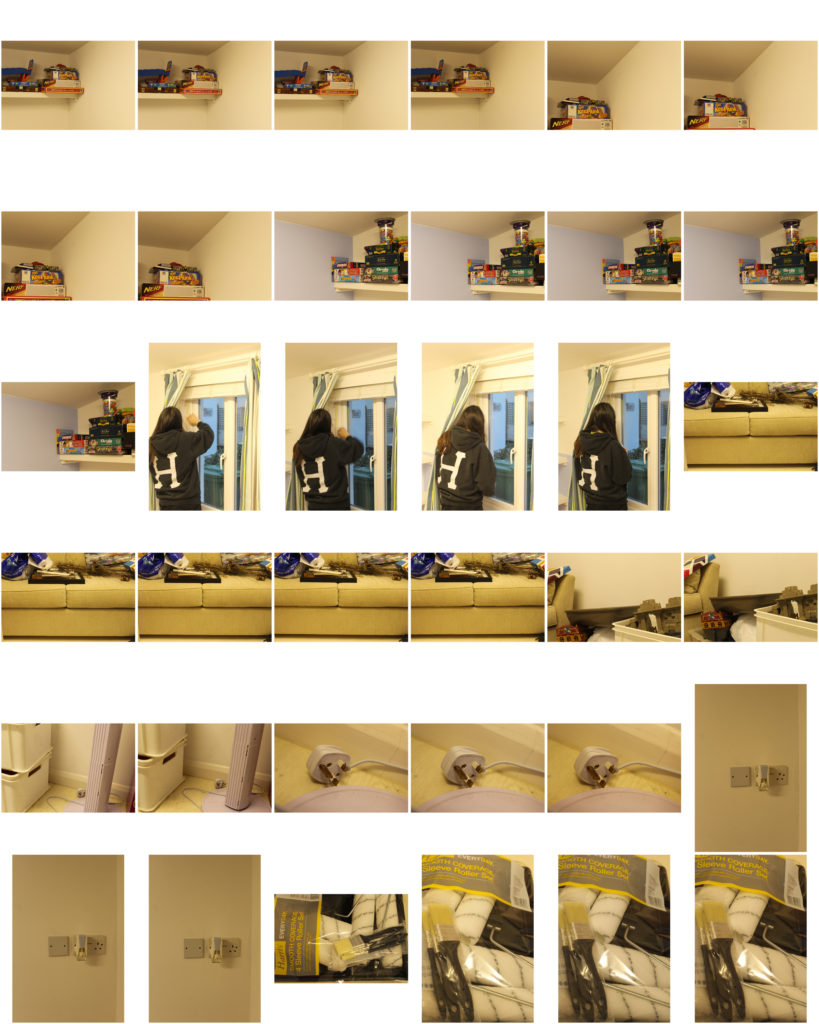

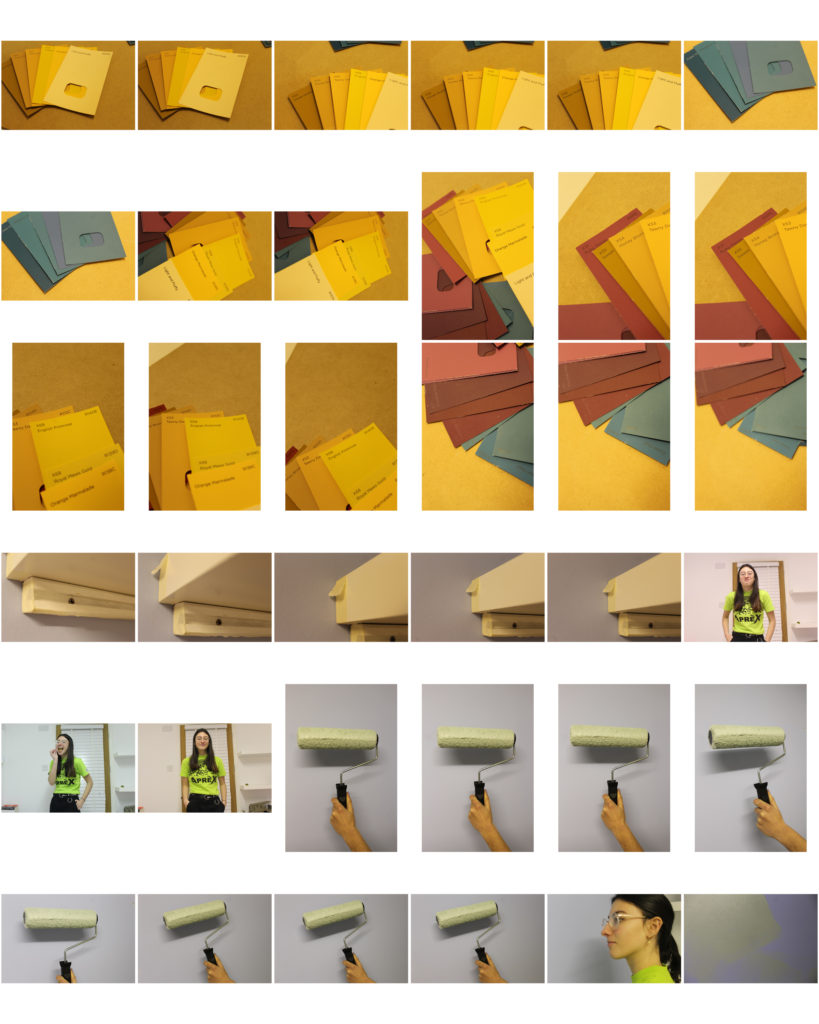
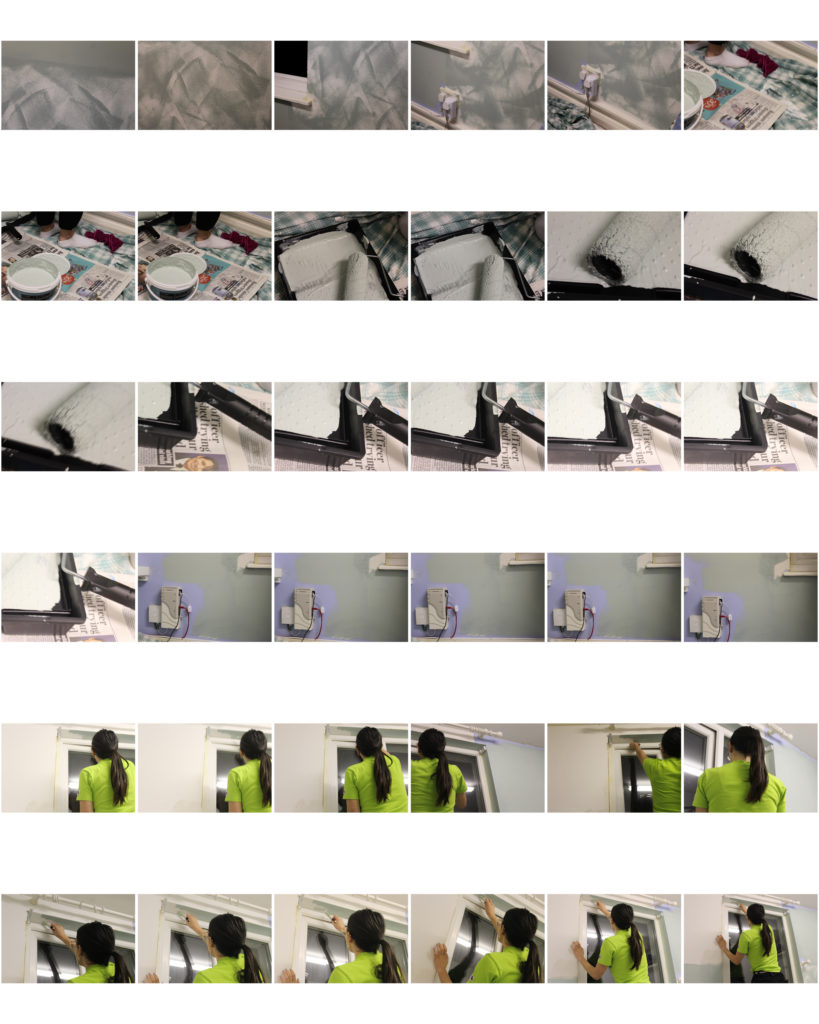
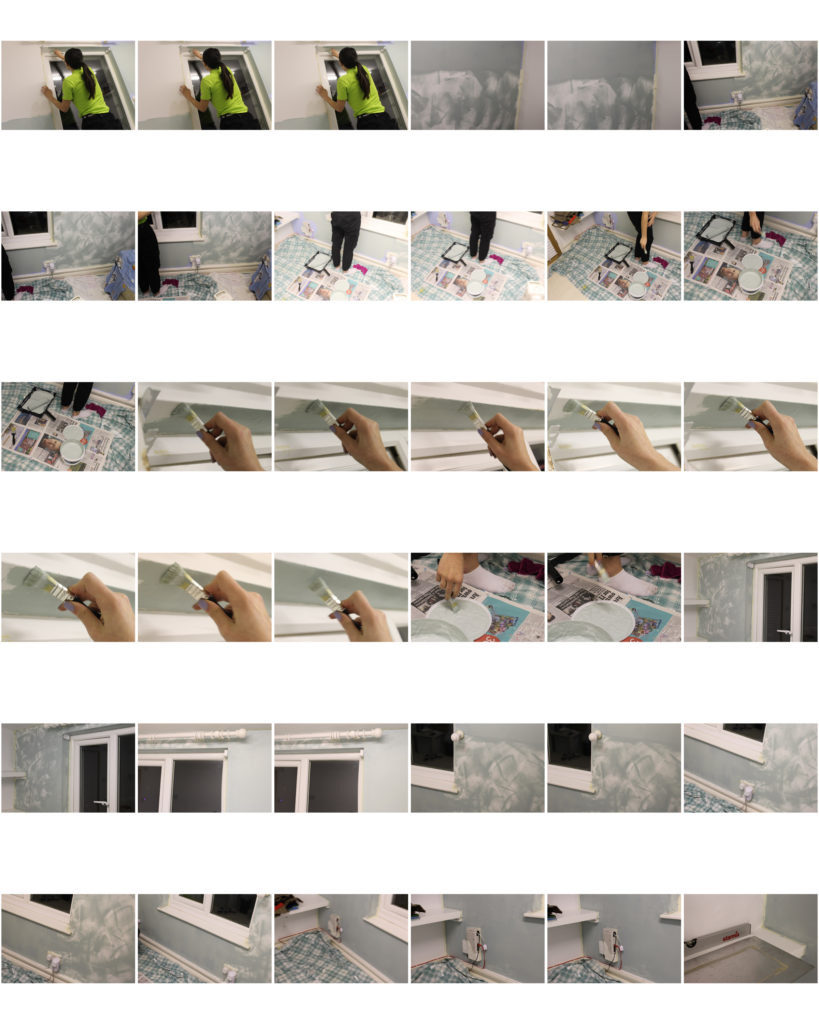
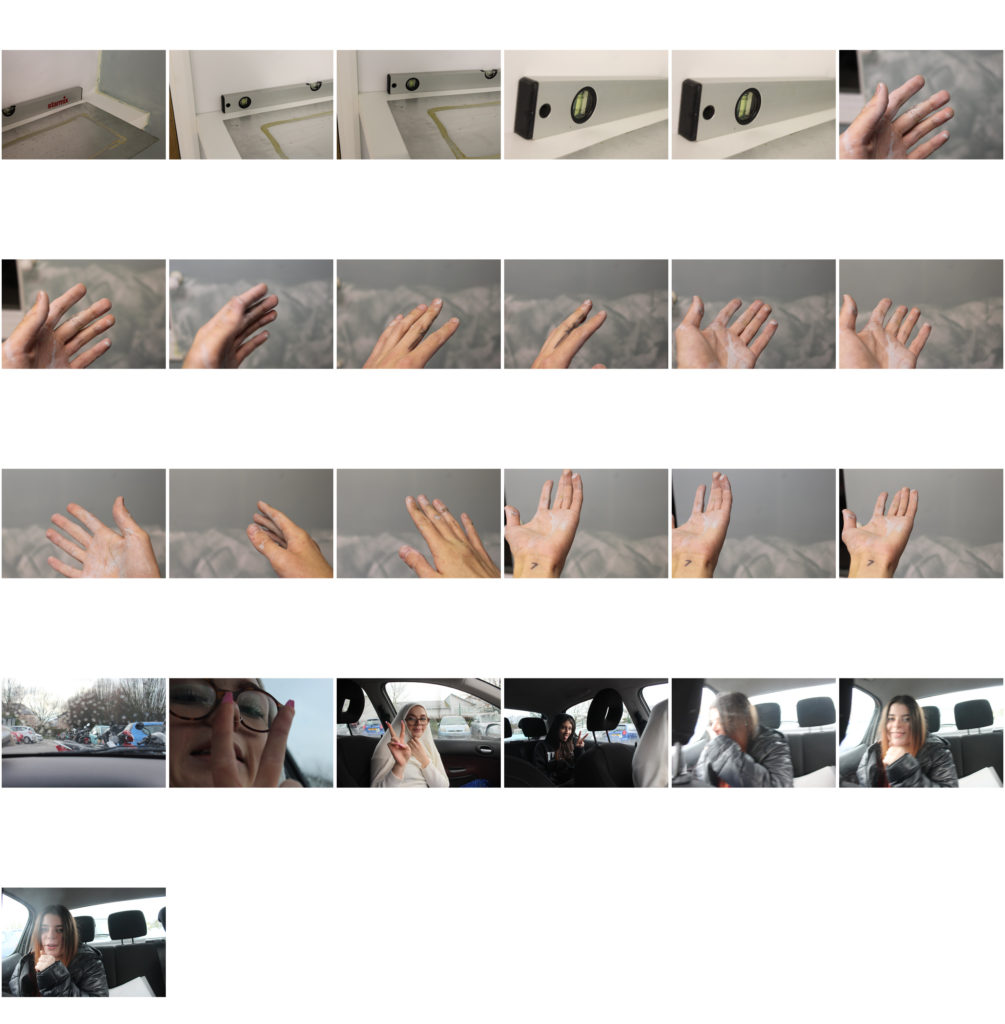
Contact Sheet:






Response 1:


I liked the concept of multiple people in one photo, where the viewer has the freedom to hone in on any subject. Each person in the photo is telling their own story and could be considered the subject if the image. In response I captured head shot photos of friends stood together but each with their own character.
Response 2:
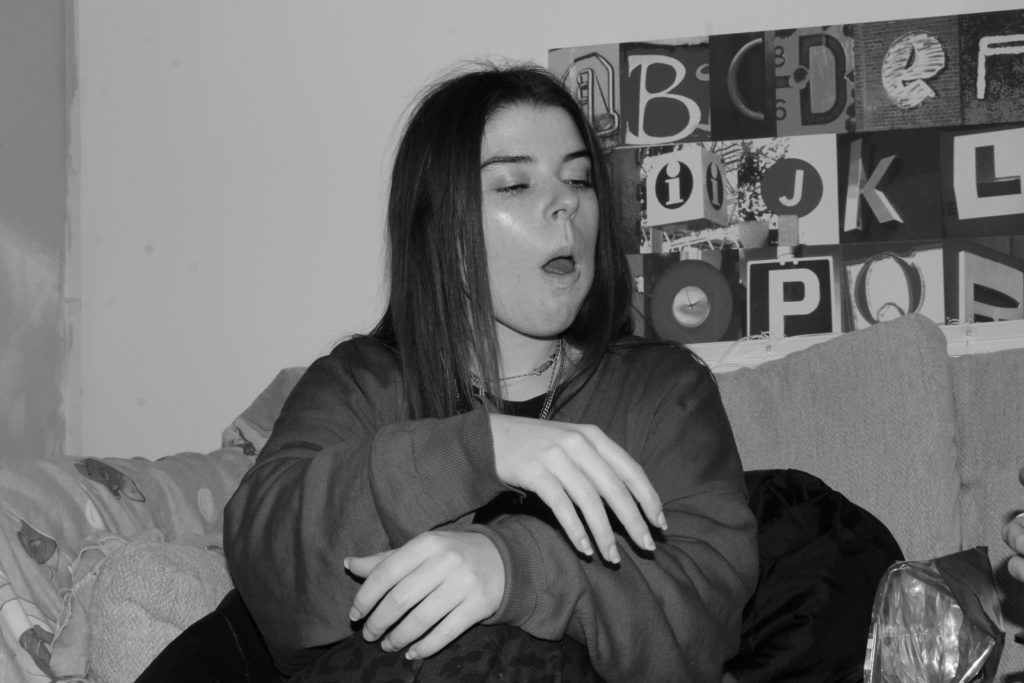
I enjoyed the humour of this image, yet the genuine nature of it. This candid shot embodies a sense of fun and a less serious side to photography, which I recreated by taking candid shots of the subject in a situation where humour and fun was inevitably going to arise and be able to be captured in an image.
Response 3:


This image in another that shows multiple subjects in the frame but the differentiating factor in this image is the fact that the subjects appear at different heights. As well as conveying the activities of the subjects, having this structure helps to bring the image together in a new way. In response I incorporated myself and a friend in the portrait image, showing us both at differing heights, separate in stature, but visibly both important to the image.
Response 4:

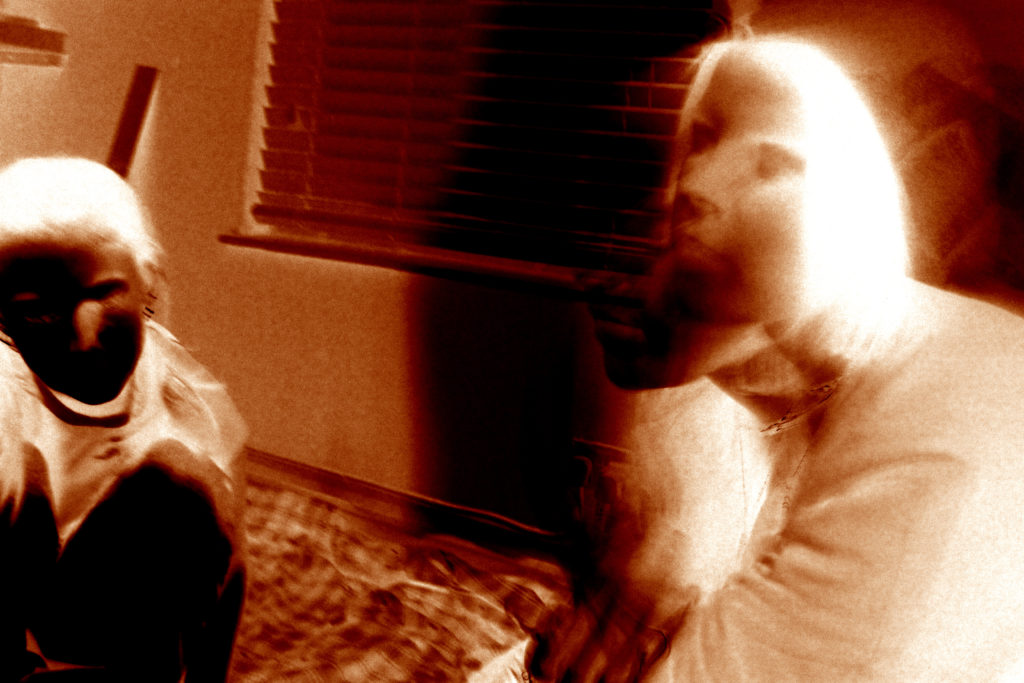
This image is relatively busy. People’s legs can be seen in the background making the only fully visible person in the photograph the focal point of the composition. It is here that a story is being told. The image captures the man’s inebriated state, emphasised through the blurry nature of the image to show the subject’s perspective of the situation. To recreate this I lowered the shutter speed to create a double exposure effect of a moving figure, similarly to Gilden’s piece.
Response 5:

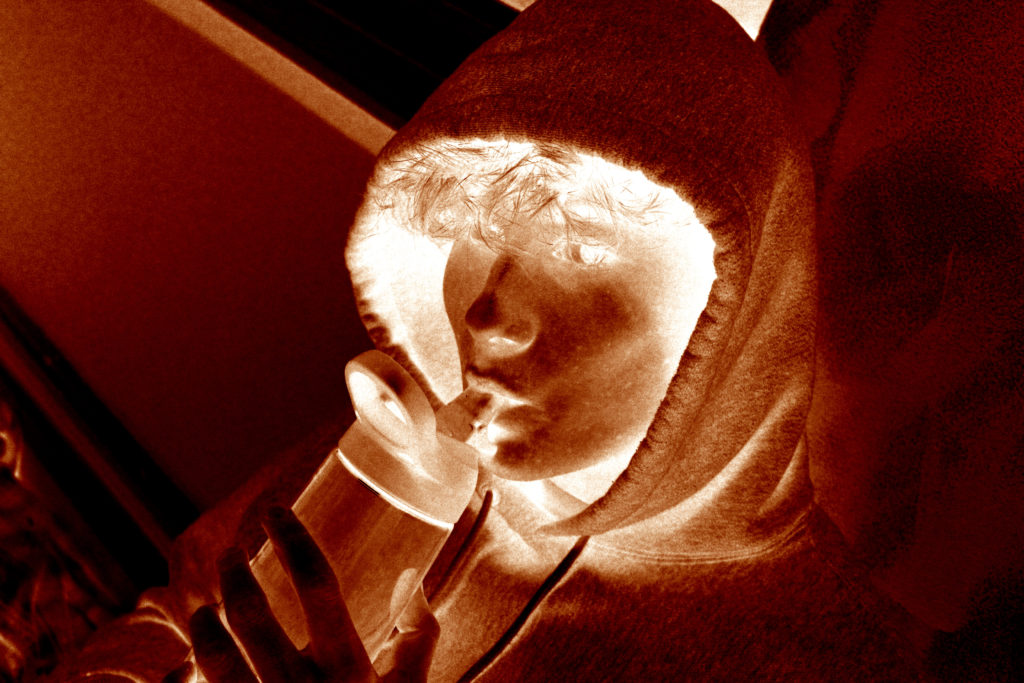
I enjoy the candid nature of this image and fact that the subject is in the middle of an action when the photograph is captured. The photograph is framed by the man cupping the lighter to spark the cigarette in his hands. In response I took candid photographs of the subject as he was drinking from a water bottle, which allowed me to capture the hand holding the bottle clear bottle which almost gives the illusion of reflecting Gilden’s image..
Bruce Gilden:

An Iconic street photographer with a unique style, Bruce Gilden was born in Brooklyn, New York in 1946. He first went to Penn State University but he found his sociology courses too boring for his temperament and he quit college. Gilden briefly went with the idea of being an actor but in 1967, he decided to buy a camera and to become a photographer.
Although he did attend some evening classes at the School of Visual Arts in New York, Bruce Gilden is to be considered substantially a self-taught photographer. Right from childhood, he has always been fascinated by the life on the streets and the complicated and fascinating motion it involves, and this was the spark that inspired his first long-term personal projects, photographing in Coney Island and then during the Mardi Gras in New Orleans.
Over the years he has produced long and detailed photographic projects in New York, Haiti, France , Ireland, India, Russia, Japan and now in America. Since the seventies, his work has been exhibited in museum and art galleries all over the world and is part of many collections. The photographic style of Bruce Gilden is defined by the dynamic accent of his pictures, his special graphic qualities, and his original and direct manner of shooting the faces of passers-by with a flash. Gilden’s powerful images in black and white and now in color have brought the Magnum photographer worldwide fame.

Gilden has received many awards and grants for his work, including:
Bruce Gilden has published 15 monographs of his work, among them:
https://www.magnumphotos.com/photographer/bruce-gilden/
Parts of an interview with Bruce Gilden:
“Do you think of the things you’re photographing as ‘dark’?“
“The world isn’t great, ok? Look what’s going on in the world. from the environment, we’re polluting the world, to terrorism, to everything. Then you have all the governments and the politicians who are all full of shit, they never tell the truth, they’re always promoting what the best deal is for themselves… I mean, come on! So, my pictures are showing that there are problems in this world. I think that the only way you can solve a problem is by confronting it. I’m an optimist.”
In some of your most iconic pictures, one can indeed get the feeling that you can see the soul of the persons you shoot. It seems that what you show is beyond the physical appearance of the subject. Is it the sole goal of your work or just one of its facets for you?
It’s not the sole goal, I don’t think about that really. I put my own soul into it. This is why I can tell you or tell somebody “With all I’ve done, you’re not going to be able to do the same as me. Maybe you’ll do worse, maybe you’ll do better, maybe you’ll do equal.” But the thing is I’ve had a very tough background, emotionally. My parents were pretty strange and I suffered. So I’m putting all of that into my pictures. If you look at the Face (Dewi Lewis – 2015) book, there was a quote by Oscar Wilde that I found two days before printing (interestingly enough, Oscar Wilde and I were born on the same day, October 16): “Every portrait that is painted with feelings is a portrait of the artist, not of the sitter”. So those people are me in some way, shape and form. And I put a lot in. I’m not doing it for anyone, it’s not about money, I just have to do it! Just think now, I’m 69 and yet I’m doing new work. How many photographers at 69 are doing new work? I’m not talking if you are using photography to create in a studio, I’m talking about going out there with people. You would be hard-pressed to find many people at 69 doing good work. That means I’m passionate about it and I compete with myself. Even if I had to stop shooting for three months because of a leg injury but now it’s healed. It’s tough to go out there now and sometimes I question myself. Because once I can’t do it, then I’ll stop. I wanted to do the Face project for 20 years, maybe 30 years, a long time ago. I had an idea to do it and then I found the right camera: the Leica S. But I don’t research, I’m not a researcher for equipment. So I found the right camera and that’s how this came about. For the last few years in New York, I was really bored and I needed to do something differently. I would go out but it was really an effort. I mean, it’s always an effort, but it was really an effort. You have to push yourself. The good photographs make it all worthwhile but who knows when you’re going to get a good photograph? I also should say that with the faces, it’s a lot easier to do good pictures than candid photography because when you combine a lot of stuff in the street, anything can go wrong. The stage set is set for you. In my pictures, people are walking. I’m a perfectionist so I couldn’t feel good about a picture unless it’s very good. Even with the faces, I’ve done those for about two and a half years and they got a lot stronger. I have some good ones from the beginning but as I went further, I saw how much more I could get out of it. It’s a learning process.
Selected quotes:
“The world isn’t great, ok? Look what’s going on in the world. from the environment, we’re polluting the world, to terrorism, to everything.”
“I’ve had a very tough background, emotionally. My parents were pretty strange and I suffered. So I’m putting all of that into my pictures.”
“Every portrait that is painted with feelings is a portrait of the artist, not of the sitter” – Face (Dewi Lewis – 2015) book
Complete Essay Plan:

Fairies is a legend and stories that inhibits all of the Channel Islands, looking specifically into Jersey’s history with mythical fairies I have found that it to be one of the favoured and known legends of the islands being habited by fairies. The islands fairies are strongly associated with prehistoric sights, MacCulloch, art historian and academic, notes it was best believed that the fairies inhibited the island before the people who are here now and ‘that the cromlechs were erected by them for dwelling places’.
It has been said that people who interfered with the ancient monuments would be punished by the fairies, it was considered extremely unlucky to meddle with the ancient stones because of the ‘wrath of the spirits’ who inhabited these places. It has been known that in areas of the parish of St Johns fairies have blinded people who have disturbed the lands around them.
Mr Hocart who once broke up the ancient stones of La Roque Qui Sonne at L’Ancresse for building material was said to have been cursed. As soon as his house was complete a fire broke out killing the servants. Parts of the stone were sent to Britain for sale and the ships which carried them sunk. The story of Hocart is noted in 19th century guide books, with various gruesome misfortunes befalling him.
For this photoshoot I plan to use a tableaux effect, placing people in costume that similar to representing that of a fairy and creating the illusion of these torments: taunting and blinding, to suggest the stories and the myths, as well as having some tableaux photographs of just the fairies in the woods and in and amongst the island for effect and to add to the ideas of the occupation it has on the island.
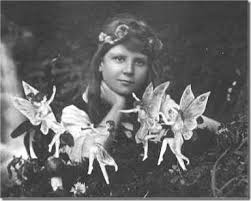

Looking into my key words of myths, legends and stories surrounding the idea of occupation I came across Anna Gaskell, a contemporary American artists known for exploring themes such as Lewis Caroll’s Alice in Wonderland (1865). Using photography, video, and drawing, Gaskell creates ominous images of women that nod to familiar or historic narratives. Born on October 22nd, 1969 Gaskell would create mostly self-portraits in the style to that of Cindy Sherman, from this she developed to taking photographs of young girls in odd or ambiguous scenes as seen in her series Wonder (1996-97). Gaskell is famous for her dream-like narrative photographs which make reference to children’s games, literature and psychology.
Gaskell’s film influences range from the Noir to French New Wave and Horror. In a series entitled Hide (1998), she sets up a narrative using the sinister Brothers’ Grimm story The Magic Donkey, which is about a young women who disguises herself under pelts to hide from a marriage proposal from her own father. The series evokes a sense of terror through the scenery of a gothic mansion and contrast of light and dark in a dimly lit space.
Gaskell explains, “Trying to combine fiction, fact and my own personal mishmash of life into something new is how I make my work”, this gives me ideas and influence of how she is a good artist for me to look into and have influence and inspiration from with the ideas of taking a starting point of fiction, using the fact and not only that but my own influence I feel is something very important that I could use as I have the influence of my own personal experiences of being told the sorties and living in and around the island.
I have chosen to look at Gaskell as one of my artists as I enjoy and am finding a lot of inspiration in the way she takes her photographs and presents them with the lighting and the costumes and effects that her photographs using the lighting but also the double characters I feel is a really interesting take in some of her work. In my own work I plan on producing photoshoots in the style of tableaux photography, staging the photographs and having the models in costume and makeup.
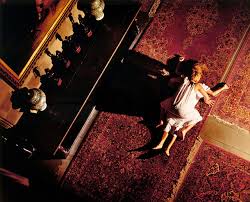
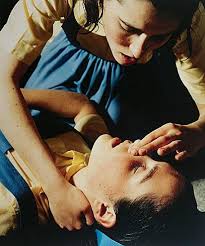
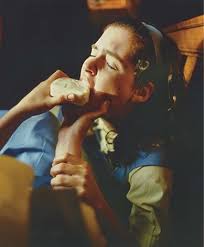
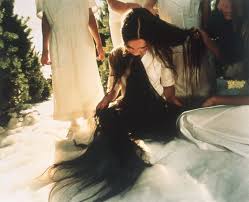
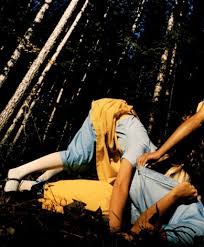
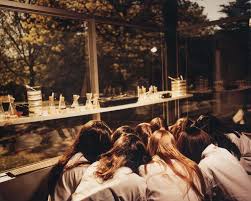
Analysis of Anna Gaskell’s work: Wonder & Override
Gaskell’s work is produced and influenced off the back of the idea of isolating dramatic moments from larger plots such as Lewis Carroll’s Alice in Wonderland, which is visible in the two series: Wonder (1996-97) and Override (1997). Gaskell’s style of ‘narrative photography” the images are planned and staged; the scenes presented are ‘artificial’ in that it exists only to be photographed. Gaskell’s process can be mentioned as similar to filming however there is an important difference; Gaskell’s photographs are not tied together by a linear thread, it is staged and created to be as though all of the events take place simultaneously, in an ever-present. In untitled #9 of the wonder series, a wet bar of soap has been dragged along a wooden floor; in untitled #17 it appears again, forced into a girls mouth with no explanation of how or why. This suspension of time and causality leads to a sense of ambiguity that she uses to evoke a vivid and dream like world.
Below I have a photograph from the wonder series, it shows two girls in the frame one lent over and holding onto the other and holding her nose. Gaskell’s girls do not represent individuals, but act out the contradictions and desires of a single psyche, Gaskell uses a pair of twins for Alice for the identicalness. While their unity is subset by their identical clothing and looks, the mysterious and often cruel rituals they act out upon each other may be metaphors for disorientation and mental illness. In wonder and override, the character collectively evoked is Alice, perhaps lost in the Wonderland of her own mind, unable to determine whether the bizarre things happening to her are real or the result of her imagination.
In the photograph below we can see both of the twins in the costume of Alice, one holding onto the nose sat above the other, the photograph is taken or has been cropped quite close up into the characters, it is creating a sense of intimacy to be that close to the subjects of the photographs but the cropping also cuts out the surroundings of the girls, it removes the context of what is happening around them and leaves the onlooker to be able to use the story of Alice in Wonderland that they know to create ideas of what is happening in this photograph alongside the other photographs. The lighting of the photograph creates an eery aura of the photograph the dark shadows on the girls I feel creates a dramatic effect that I want to try to incorporate into my own work when I start to develop the tableaux images in my personal investigation. The almost chiaroscuro lighting creates that dramatic effect on the girl in the top of the photograph.
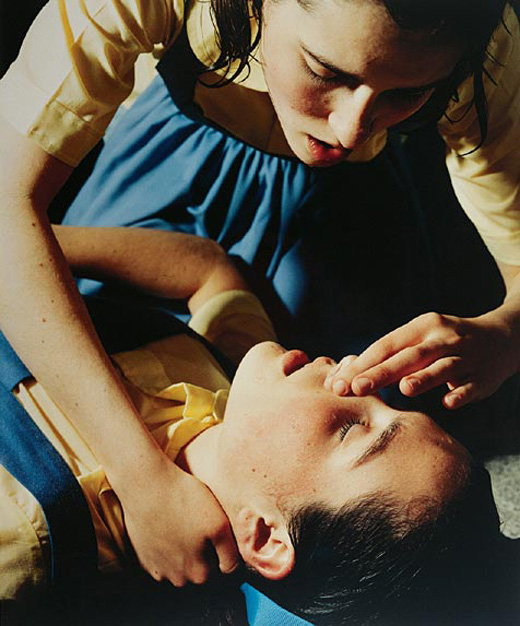
Since the invention of the daguerreotype in 1839, photography has allowed the photographer to present concepts, ideas and remarks on society through a single visual image. The context and concept behind photographs has become increasingly more important as the public’s understanding of political, social and environmental struggles has improved, and photography helps to portray a deeper meaning and understanding of society’s problems. The presentation of gender roles and stereotypes has been a popular concept within art and photography throughout the history of both art forms, but it is only recently that artists have begun to directly challenge these stereotypes in their work. The deeply ingrained gender stereotypes found in society, some more subtle than others, have been present throughout history, and society’s views throughout history have developed and changed. In my personal study I wish to be able to show these changes and developments in gender stereotypes through the 20th and 21st century, and show how as we have progressed as a society into the modern world, our ideas about having strict and rigid gender stereotypes, roles and ideals has changes, and having these clear roles has become less important, yet evidence for stereotyping still remains. Out of the many artists who study gender stereotypes in their work, I have chosen to focus on photographers Cindy Sherman and Phoebe Jane Barrett, who both present gender roles in the 21st century, but with very different takes and approaches. I have chosen to study these artists, because I believe both Barrett and Sherman convey strong context and meaning through their images, while at the same time producing work that really engages the viewer, and allows for a dialogue to be opened about the way that society and the media portrays versions of both men and women, that are not true to real life, thus forcing people to adopt stereotypical behaviour in order to fit in to a social norm. Sherman specifically comments on the fact that her work is meant to represent the issues with the presentation of women in media as a whole, and therefore attempts to mask her own identity in order to allow the concept to be generalised to women more widely. Although she uses self-portraits to present her work, she believes “It’s about obscuring my identity, erasing or obliterating myself. It’s not fantasy or pretending or narcissism. It’s not about me.” (O’Hagan, S. 2019). In order to compare these two artists, I will need to find both similarities, such as the concept of drawing attention to gender stereotypes and their presentation, and differences, such as their different visual portrayals of these stereotypes and the way in which they approach their work. Both artists approach towards challenging historically rigid and strict gender roles and stereotypes can be seen as an attempt to redefine what society sees as acceptable for each gender, and bending the rules in order to allow individuals to express themselves freely without being judged. Phoebe Jane Barrett acknowledges the consequences of these strict barriers to individual expression, and her quote, “I wish that gender created less of a divide between people“…
Bibliography:
O’Hagan, S. (2019), Cindy Sherman: ‘I enjoy doing the really difficult things that people can’t buy. London: The Guardian. 06/12/2019; 15:11. <https://www.theguardian.com/artanddesign/2019/jun/08/cindy-sherman-interview-exhibition-national-portrait-gallery>
Marili. (2019), Soft, Intimate and Emotive: Redefining Masculinity with Photographer Phoebe Jane Barrett: Germany: EyeEm. 10/12/2019; 15:16. <https://www.eyeem.com/blog/redefining-masculinity-with-photographer-phoebe-jane-barrett-2018>
My area of study is going to be war photography, as it is related to the topic were studying (occupation vs. liberation) and because I have a lot of family history with wars. Specially with how my great grandpa was a high rank and a really appreciated leader by his country and even other countries like Palestine. His biggest achievement was leading the whole Jordanian army in Al Karamah battle and that is what I will be focusing on. I’m going to start first by talking about how I heard of his stories, then I’m going to talk about his story and achievements, lastly, I’m going to finish up by talking about how he affected me personally. Meanwhile I will be using artists references throughout.
The artist I’m going to be studying first and analyzing is Paul Burnal as he is a war author which is similar to what I’m working on, and i chose him specifically out of a lot of war authors as he wrote one of my favorite books which is Batterie Lothringer and is based on photographs taken in Jersey about wars so that will give me easy access to take the similar photographs.
I am going to be responding to his work by studying him and his history first, then I’m going to try and do similar photographs as his.
The quote that caught my eyes as I was reading his book is “…Buried four bodies today, I was quite tired from all these going on” (Burnal,2015:221); As it just shows how much he suffered and was just done with everything going on which relates to my story as I kind of had to suffer from the effect of war on me.
I also want to link cultural-ism to my project as it somehow has an effect on everything that’s included in my project, the basic idea about cultural-ism is that it is the idea that individuals are determined by their culture, that these cultures form closed, organic wholes, and that the individual is unable to leave his or her own culture but rather can only realize him or herself within it. Which also relates to how i came to Jersey for education and still want to complete my wish of going into going into the navy as my great grandpa influenced me to after his achievements, but even if i want to join an English based army force i will not be able to just become English while i’m there no matter how long i stay i will always have my culture that will not change no matter what.

I want to use this photograph as proof of my idea of cultural ism as you can see how even though the guy in the middle is serving for a different culture he still kept his cultural identity and didn’t try to hide it but yet he wanted to show it off to everybody by dressing as his culture would with his head dress and facial hair. And this relates to how i would be if i was to join an English army force i would still practice my own cultural practices.
Paul,B. (2002) Channel Islands Occupation Society.
Since I am looking at family and hope to portray them and my relationship to them as they would be in their daily lives without any intentional manipulation, my work can be related to the movement of Realism. Realism was a creative movement which originated in France during the 1850s. Individuals who identified as realists rejected the ideas of Romanticism and revolted against the subject matter and overemphasized emotionalism of the movement. Realism in photography portrays things as they are without any abstract or idealised factors put into to change the image. People usually think of Realism within photography as the ‘truth’, since the images haven’t been edited or manipulated to change what is going on within it. However, this may not always be the case, as an image doesn’t need editing to be untruthful. As Giles Duley said, ‘ There is no truth in photography, only honesty’, which could mean that you never really know what the truth is when it comes to images that you haven’t taken yourself, since factors such as angles and camera lenses can change the real situation, so the only thing a photographer can do is be honest about their work.
Family pictures have been around for hundreds of years, with family photos becoming common around the time the camera was invented. Before the invention of the camera, middle to high class families were able to pay for expensive family portraits to be painted for them. Family has always been a main art subject, with individuals wanting to treasure their loved ones and their family legacy by having either a painting or a photo made of them. As cameras evolved and became more popular, photographers were able to find another way of documenting their families, by taking candid images of them within their lives. The subject of family is generally a topic which is related to Realism as many photographers prefer to capture their family relations as they are within their daily lives, with as little changes as possible. My work is the same, as I am planning to document my family from both London and Jersey and portray my relationship with them as they are normally, making my work related to Realism. I am looking at two photographers who both look at family, Walker Evans and Latoya Ruby Frazier, and both their work can link to Realism as they both document the lives of families and the effects of the economic downfalls that their families are facing.

One photographer whose work is related to Realism is Dorothea Lange, a photographer who took images of farmers and migrant workers during the Great Depression and how this economic downfall affected these individuals. This image of the migrant mother and her children is one of Lange’s most famous images, and this is because it conveys a large amount emotions and stories just by looking at the mother’s facial expression. As a realist photographer, this image has not been altered or manipulated and is a clear idea of what was happening during the time of the Great Depression. Dorothea Lange is quite similar to the photographers I have chosen for my question, Latoya Ruby Frazier and Walker Evans. She looks at the oppression and suffering of people during an economic downfall, such as the Great Depression that both she and Walker Evans were looking at, and her work is documentary-like, showcasing the effects of these events.
Bibliography:
Question – How does Walker Evans and Latoya Ruby Fraizer portray the importance of family in their work?
Introduction:
Once used only to document information, photography has now flourished into a huge industry, being used for multiple different reasons – for self-expression, for awareness of current events, for political grounds. As once said, “From Daguerre’s age to ours, photography has undergone a transformation, not only technologically but conceptually.”(Bright and Van Erp. 2019:18) The ways to take and portray photos are endless, with each person having an independent reason as to why and how they could utilise photography. Many use this form of expression to focus it on the ones they value the most – family. Family has a significant impact in an individual’s life. They are the first people they are familiarised with in early childhood, they are the ones who make them feel comfortable and safe, and are usually the ones who help them get through when they find themselves stuck in a tough situation.
For my personal study, I will be focusing on the importance of family, specifically my own, and hope to portray them in a way which can express their importance to me. Family has always been important in my life. As mentioned before, they are the first people who we know in our lives, and this creates a special bond from early childhood which cannot be replicated with anyone else or destroyed. Most of my family, including my parents and younger brothers, currently live in London whereas I moved to live in Jersey with my aunt and uncle over a year ago. This evidently means that I don’t see and talk to them as much as I used to, but although we may not end up talking for a week or may not see each other for a few months, we still have that strong connection. This theme relates to the previous work I have been doing on Occupation and Liberation as families were affected during the war, especially those who had family members outside of Jersey and had trouble communicating with them while the island was occupied. We were able to take a look at the Red Cross letters which were sent between people trying to communicate with their loved ones, and were able to see the limited words exchanged between family which were separated.
The two photographers I am looking at are Walker Evans and Latoya Ruby Fraizer, two individuals who both documented family life. I decided that I would be investigating these artists as their works link to the theme which I am looking at. Although Walker Evans didn’t photograph his own family, he did take a look at others and the effect that the Great Depression had on these families. Latoya Ruby is a photographer who looked at her own family and effects that the state of the community had on them. These two photographers also relate to the work I have been doing previous to this, about the Occupation in Jersey, as their photographs revolve around the oppressed and struggling people in a place which wasn’t economically or socially strong at the time, with Walker Evans looking at families who were being effected by the Great Depression and Latoya Ruby looking at her own family within a community which was struggling with racism and economic downfall. To respond to these photographers’ works and my question I will be taking images of my own family from both London and Jersey and plan to edit them in the same black and white way which both Evans and Fraizer used for their images, so there won’t be much experimentation with colour but I will be focusing on factors such as contrast, cropping and under/over exposure. I will be aiming to take these images in a documentary style within the homes of my family members as this is when they are most themselves and the most authentic, which is an important factor of my photoshoot.
Bibliography :